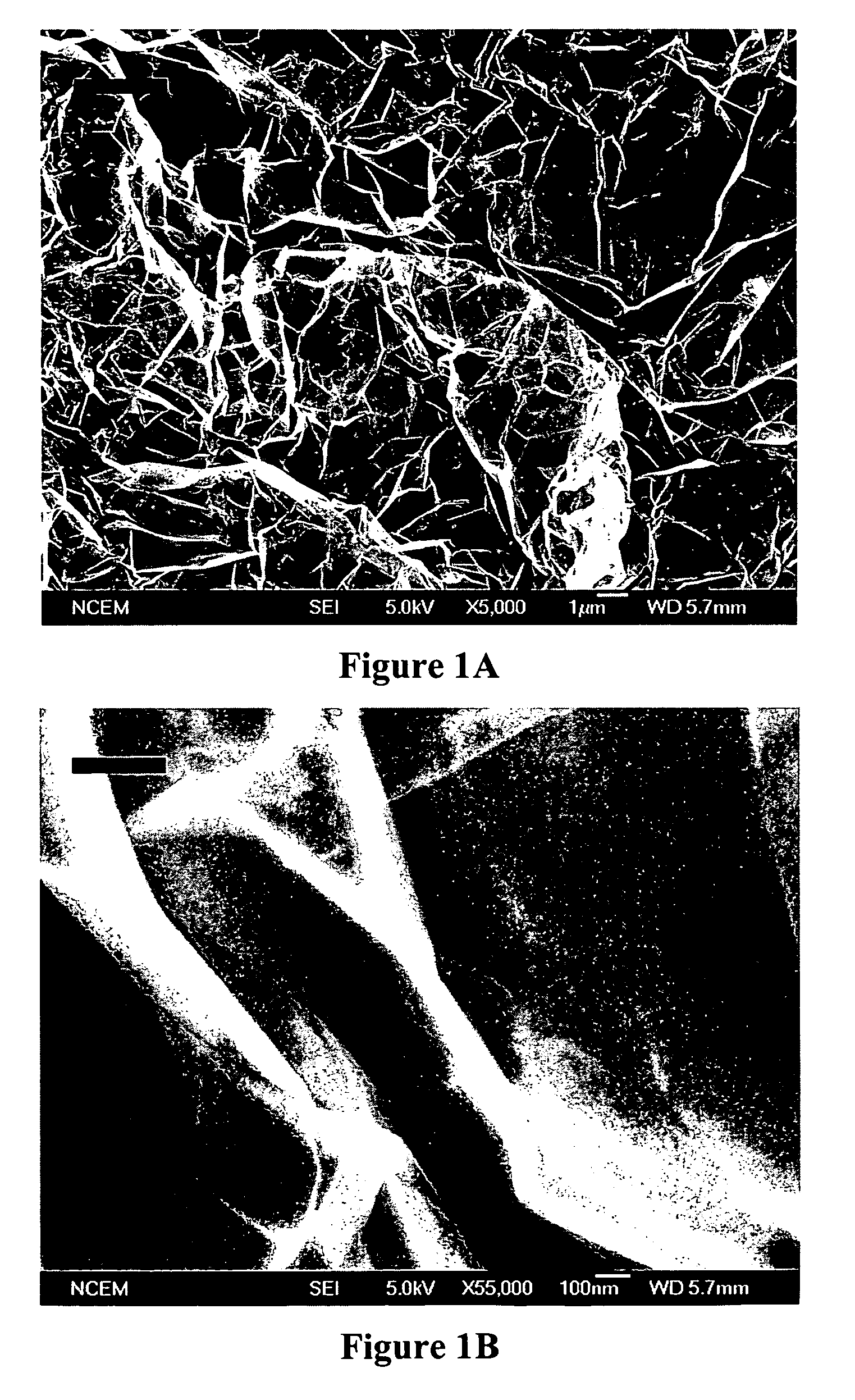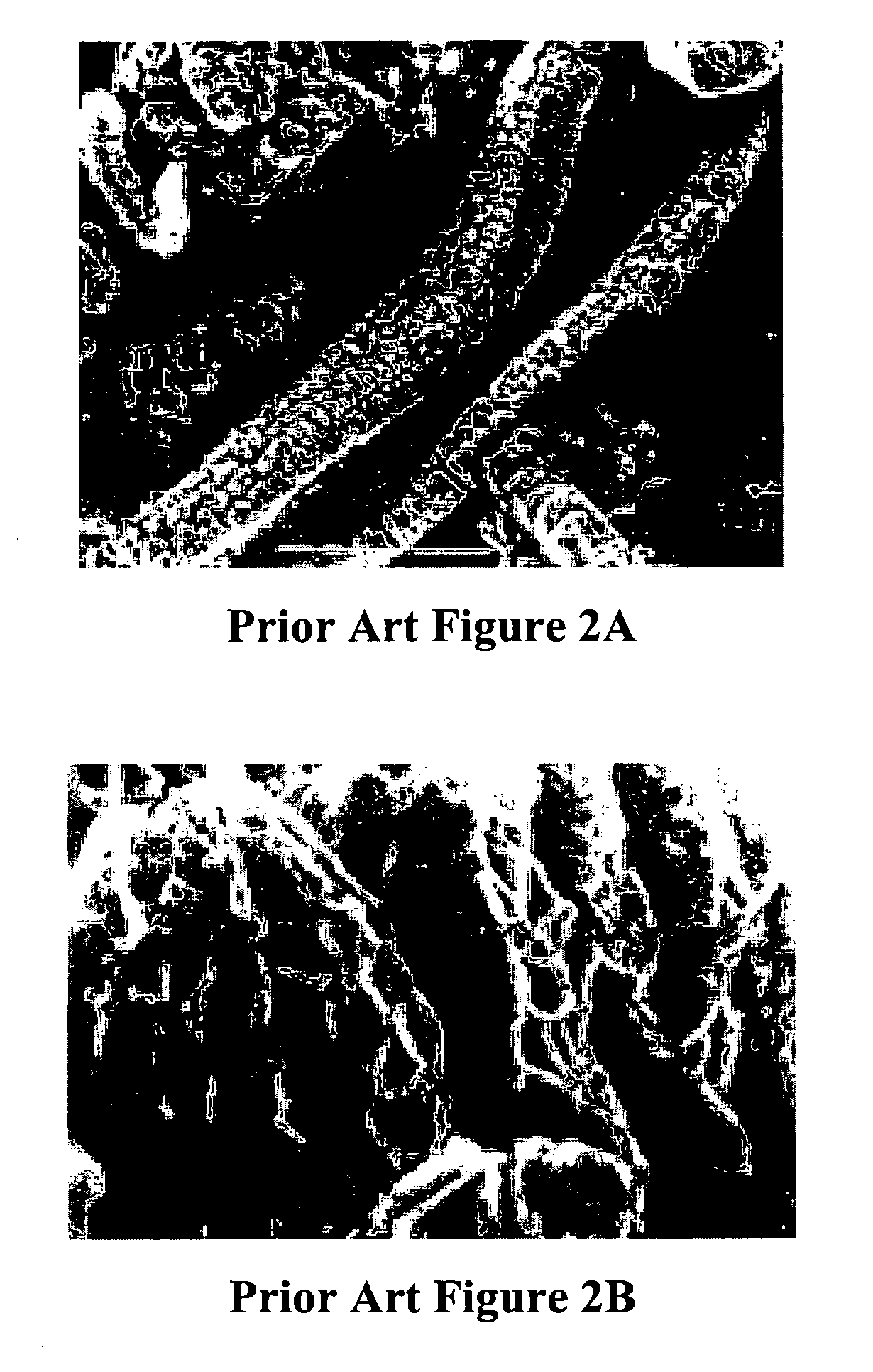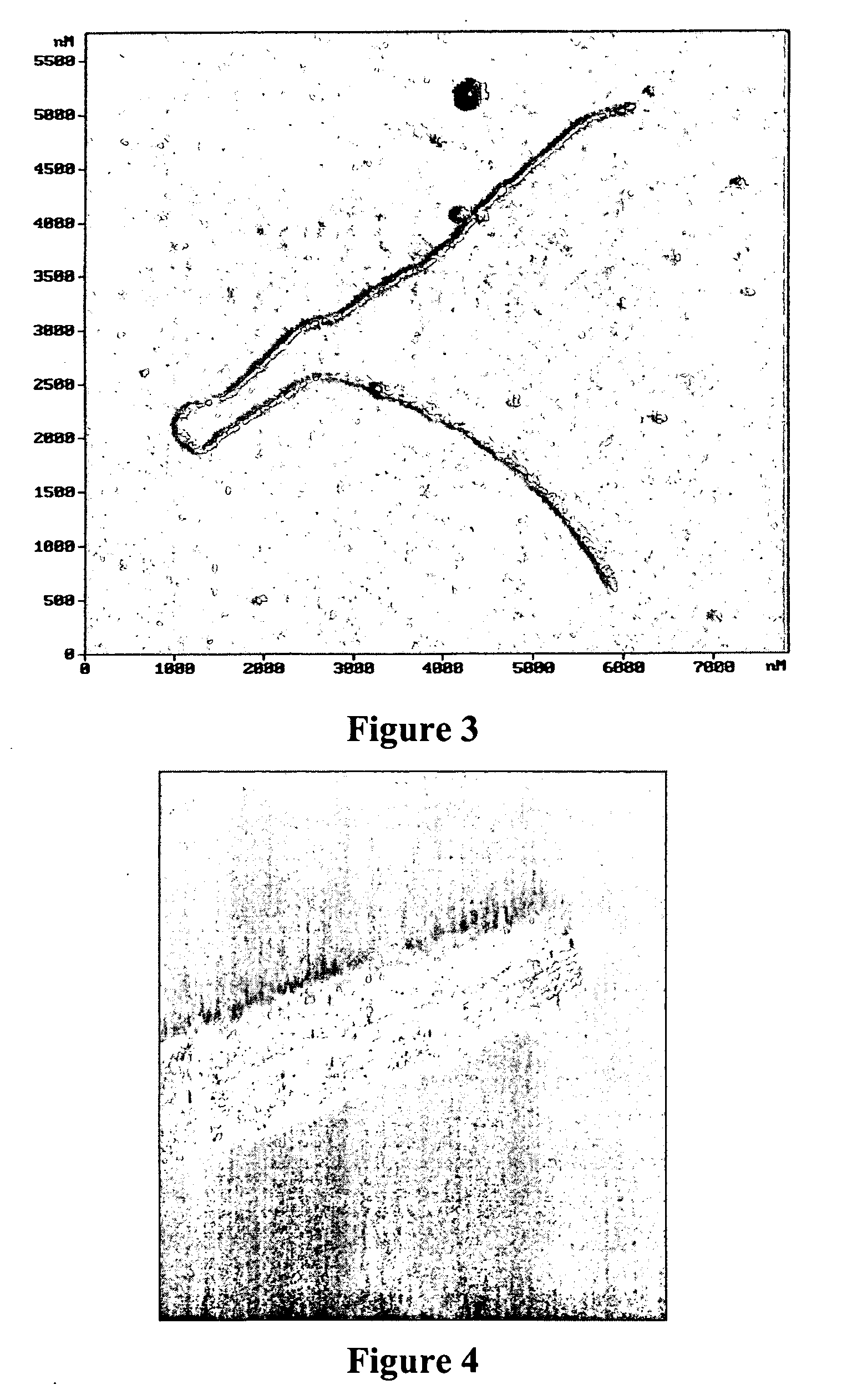Mass production of carbon nanostructures
a carbon nanostructure and mass production technology, applied in the field of carbon nanostructures, can solve the problems of low yield of arc discharge, low yield of other nanostructures, and inability to achieve industrial significant yields
- Summary
- Abstract
- Description
- Claims
- Application Information
AI Technical Summary
Benefits of technology
Problems solved by technology
Method used
Image
Examples
examples
[0047] The following examples are provided only to illustrate selected aspects of the inventive subject matter and are not limiting to the inventive concept presented herein.
Production of Graphene
[0048] 100 g of flake graphite (e.g., commercially available from Superior Graphite Company, 10 South Riverside Plaza, Chicago, Ill. 60606, or Crystal Graphite Corp., Vancouver, B.C., Canada) was admixed with 100 ml activated acid catalyst (e.g., Activated Acid Catalyst #3, commercially available from SupraCarbonic, 348 N. Eckhoff Street—Orange, Calif. 92868, USA) and briefly heated to expansion at about 100° C. to about 200° C. The so obtained material was used without further purification for electron microscopy and exemplary electron micrographs at different magnifications are shown in FIG. 1A and FIG. 1B. Depending on the purity and quality of the graphite, the so obtained material typically comprises between 30 wt % and 99 wt % graphene.
Production of Open-Ended SWNT from Graphene
[0...
PUM
| Property | Measurement | Unit |
|---|---|---|
| Temperature | aaaaa | aaaaa |
| Temperature | aaaaa | aaaaa |
| Temperature | aaaaa | aaaaa |
Abstract
Description
Claims
Application Information
 Login to View More
Login to View More - R&D
- Intellectual Property
- Life Sciences
- Materials
- Tech Scout
- Unparalleled Data Quality
- Higher Quality Content
- 60% Fewer Hallucinations
Browse by: Latest US Patents, China's latest patents, Technical Efficacy Thesaurus, Application Domain, Technology Topic, Popular Technical Reports.
© 2025 PatSnap. All rights reserved.Legal|Privacy policy|Modern Slavery Act Transparency Statement|Sitemap|About US| Contact US: help@patsnap.com



